| Home |
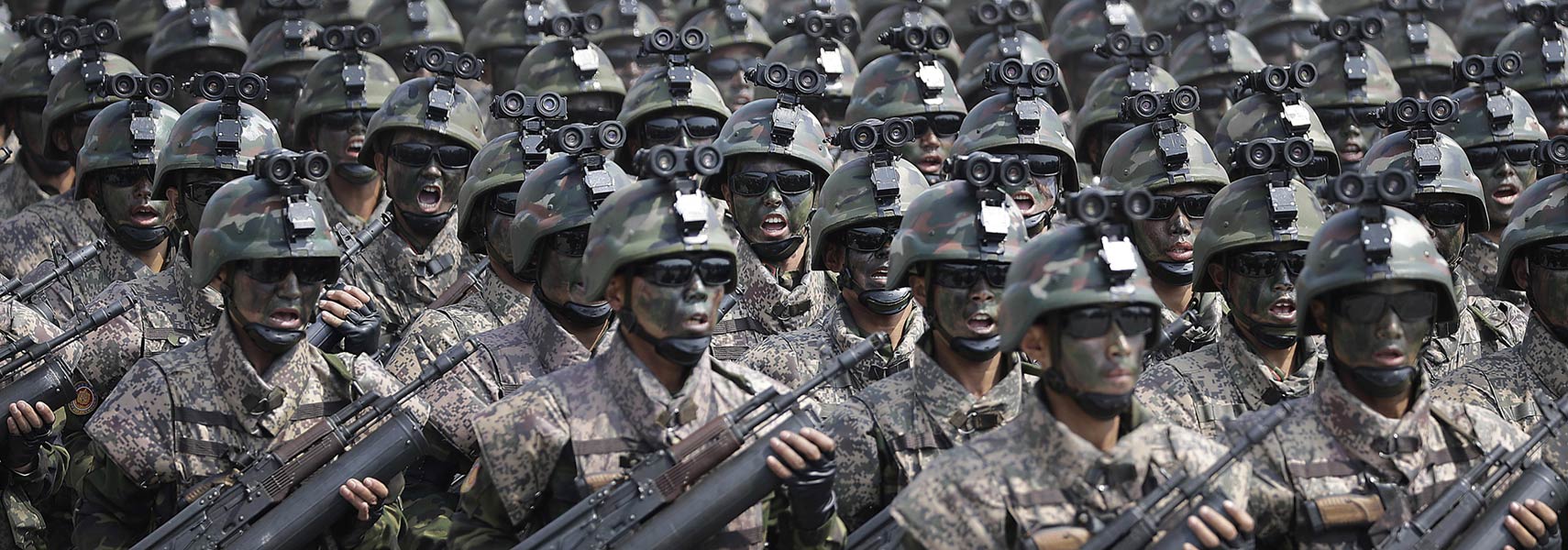 North Korean Special Operations Forces march across the Kim Il Sung Square in Pyongyang, wearing 'pixel camouflage' on their shoulders, similar to camouflage used by Chinese troops. The hermit kingdom rolled out thousands of people, balloons, paperflowers, intercontinental ballistic missiles and other military hardware at a parade in April 2017, to celebrate the 105th birthday of the country's late founder Kim II Sung, grandfather of current ruler Kim Jong Un. Image: AP |
___ North Korea - (Democratic People's Republic of Korea)Destination North Korea, a country in eastern Asia that occupies the northern part of the Korean peninsula which is located south of mainland China, between the Sea of Japan (East Sea) in the east, Korea Bay and Yellow Sea in west.North Korea is bordered by China in north, and it has a 18 km long border with Russia in north east. North Korea occupies an area of 120,538 km², compared it is about half the size of the United Kingdom (242,900 km²) or somewhat larger than half the size of the U.S. state of Utah (219,882 km²). North Korea has a population 25 million (est. 2017), capital and largest city is Pyongyang, official language is Korean. |
Democratic People's Republic of Korea | Choson | 조선민주주의인민공화국 |
Country Profile |
|
Official Name: Democratic People's Republic of Korea (D.P.R.K. or North Korea) conventional short form: North Korea local long form: 조선민주주의인민공화국 Chosŏn minjujuŭi-inmin-konghwaguk ISO Country Code: kp, prk Actual Time: Fri-Apr-26 12:49 Local Time = UTC +9h Country Calling Code: + 850 Capital: P'yongyang Government: Type: Highly centralized communist state Independence: 9 September 1948 Constitution: 1948; 1972, revised in 1992. Geography: Location: Eastasia Area: 120,538 km² (47,000 sq. mi.) Terrain: About 80% of land area is moderately high mountains separated by deep, narrow valleys and small, cultivated plains. The remainder is lowland plains covering small, scattered areas. Major Cities: Hamhung, Chongjin, Wonsan, Nampo, and Kaesong Climate: Long, cold, dry winters; short, hot, humid, summers. People: Nationality: Korean(s) Population: 25 million (2015) Ethnic groups: Korean; small Chinese and Japanese populations. GNI per capita PPP: $ 1 400 (year) Religions: Buddhism, Shamanism, Chongdogyo, Christian; religious activities have been virtually nonexistent since 1945. Language: Korean Literacy: 99% Natural resources: Coal, lead, tungsten, zinc, graphite, magnesite, iron ore, copper, gold, pyrites, salt, fluorspar, hydropower. Agriculture products: Rice, corn, potatoes, soybeans, pulses; cattle, pigs, pork, eggs. Industries: Military products; machine building, electric power, chemicals; mining (coal, iron ore, magnesite, graphite, copper, zinc, lead, and precious metals), metallurgy; textiles, food processing; tourism. Exports - commodities: minerals, metallurgical products, manufactures (including armaments), textiles, agricultural and fishery products Exports - partners: China 75.8% (2015) Imports - commodities: petroleum, coking coal, machinery and equipment, textiles, grain Imports - partners: China 76.4%, Republic of the Congo 5.5% (2015) Currency: North Korean Won (KPW) North Korea key statistical data. |
Note: External links will open in a new browser window. (Semi-) Official Sites of North KoreaDemocratic People's Republic of KoreaInformation about North Korea, the Great Leader Kim Il Sung, the Dear Leader Kim Jong Il, and current Supreme Leader Chairman Kim Jong Un. Official webpage of the Democratic People's Republic of Korea (North Korea). Site created by Korean Friendship Association. Maps Political Map of North Korea. Map showing North Korea with international borders, provincial boundaries, provincial capitals, major cities, main roads, railroads and major airports. Korean Peninsula Map of the Korean Peninsula. Searchable map and satellite view of the Korean Peninsula. Searchable map and satellite view of North Korea's capital city. Political Map of Asia. 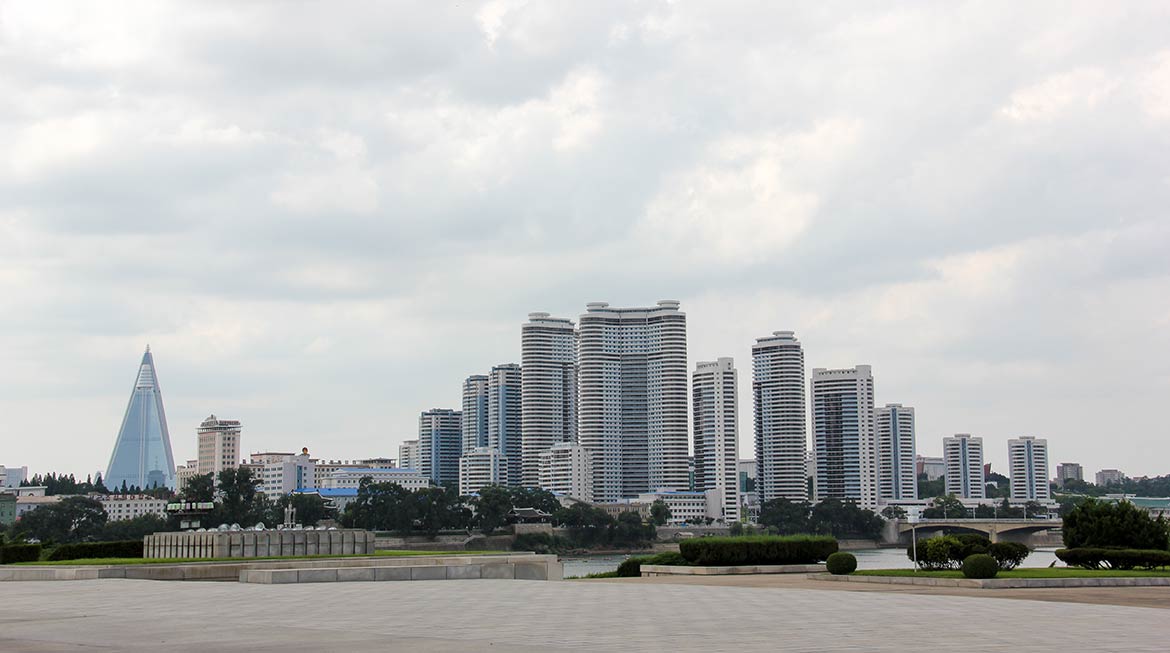 Pyongyang skyline with residental towers and Ryugyong Hotel on the left. Image: Laika ac 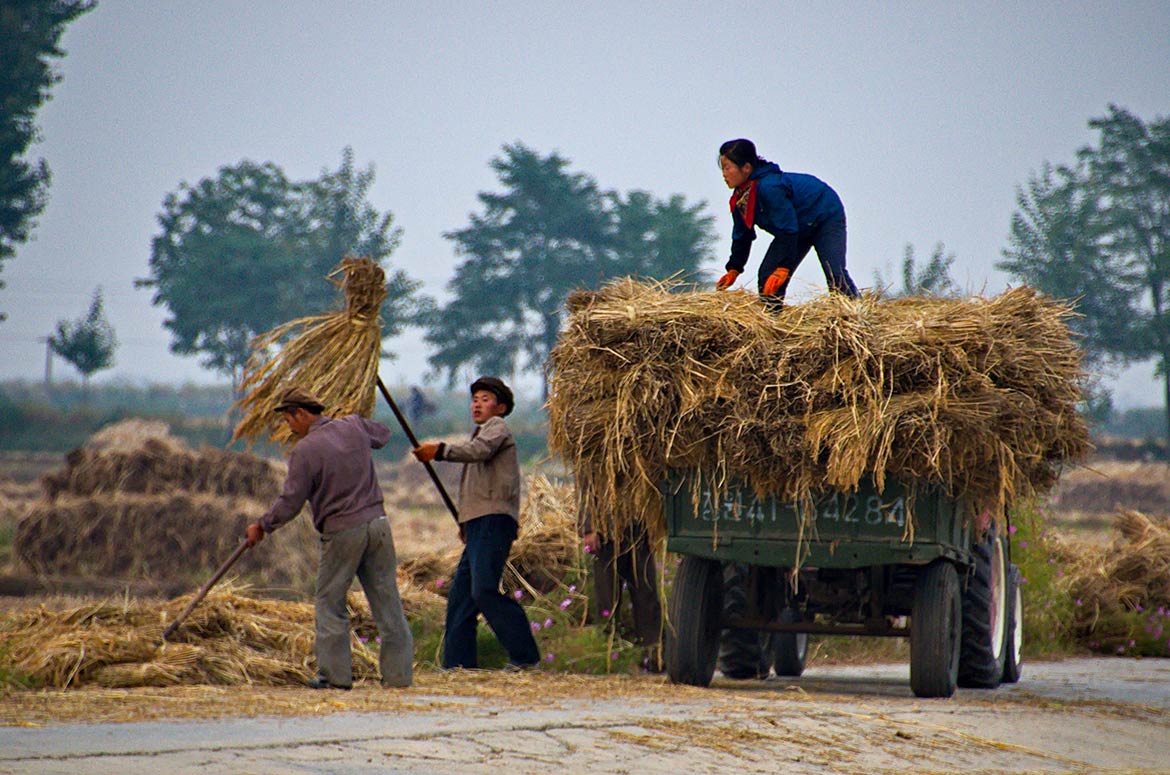 Harvest at Chon Sam agriculture co-operative farm between Wonsan and Kosan, east of Pyongyang. Image: Uwe Brodrecht |
NewsNorth Korea’s totalitarian regime continues to keep its population in a state of a brainwashing like system that creates a virtual reality the regime wants and needs to survive. The Korean Central News Agency (KCNA) is the sole source of official news for the print and broadcast media. No foreign media or let alone the internet is able to penetrate the made up or convenient information provided by the regime. It is a humanitarian nightmare.  One of North Korea's most familiar faces in the West, TV anchor Ri Chun-hee. North Korea's 'people's broadcaster' and most famous newsreader has been on air for more than 40 years.
Korean Central News Agency (KCNA) Responsible for North Korea's news. The Rodong Sinmun Supreme Leader's Activity In DPRK. Naenara Official news from the DPRK. The Choson Sinbo Organ of the pro-North Korea representative body, with seat in Japan. Radio Voice of Korea State-run external service, web pages in several languages. International News Sources NK News North Korea news with US background, headquartered in Seoul. Daily NK Online newspaper with North Korea related news based in Seoul. You want to know why North Korea did it? It's their economy, stupid . . . New York Times article about North Korea's latest A-bomb test. China's 'nightmare scenario' BBC article - A North Korean nuclear test has long been a nightmare scenario for China. | Bookmark/share this page 
|
Business & EconomyCentral Bank of the Democratic People's Republic of Korea North Korea's central bank, it issues the North Korean wŏn and the Chŏnsŏng banking card. (until now the bank does not maintain a website) DPR Korea-Trade North Korean magazine that aims to promoting trade, exchange and cooperation between the DPR of Korea and foreign countries of all continents. (Service only partly available) Consumerism in North Korea: The Kwangbok Area Shopping Center Article by 38 north, a project of the U.S.-Korea Institute. |
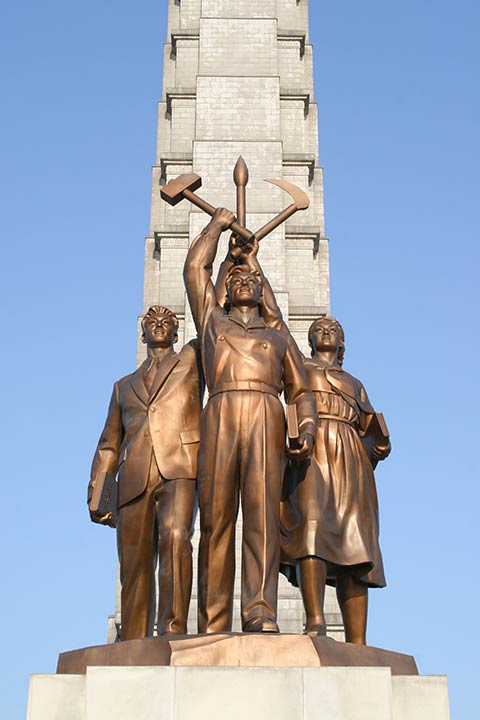 Socialist workers statue on the Juche Tower, Pyongyang. Image: Gilad.rom |
Travel and Tour Consumer Information
Country GuidesDiscover North Korea: Tourism in Korea Official tourism information for visits to the DPR of Korea. Travel Koryo Tours ...if you're one for adventure, let Koryo Tours is a Beijing based tour operator offering group and private tours to North Korea. |
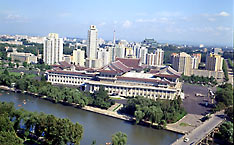 Pyongyang © kcckp.net |
HistoryEyewitness: A North Korean Remembers Korean history from 1930 to 1955. (see also: Seoul City Sue) Korean History Project Comprehensive site about Korean and East Asian history. National Institute of Korean History (South Korea) NIKH's mission is to governmental the nation's historical heritage, founded in 1946. The T'angun Legend The national foundation myth - the short version. Korean Myths and Tales : Tangun, The Father of Our Nation The long version. History of Korea Wikipedia entry about Korea's History. |
|
Other Countries in East Asia: China (PRC) | Japan | Mongolia | South Korea | Taiwan (ROC) | Tibet (China) Special Administrative Regions of China: Hong Kong | Macau Major cities in Eastern Asia: Beijing, Busan, Chongqing, Fukuoka, Guangzhou, Hanoi, Ho Chi Minh City, Hong Kong, Kobe, Kyoto, Lhasa, Macao, Nagoya, Osaka, Pyongyang, Sapporo, Seoul, Shanghai, Shenzhen, Taipei, Tianjin, Tokyo, Ulaanbaatar, Yokohama |
One World - Nations Online .:. let's care for this planet Promote that every nation assumes responsibility for our world. Nations Online Project is made to improve cross-cultural understanding and global awareness. More signal - less NOISE |
| Site Map
| Information Sources | Disclaimer | Copyright © 1998-2023 :: nationsonline.org |